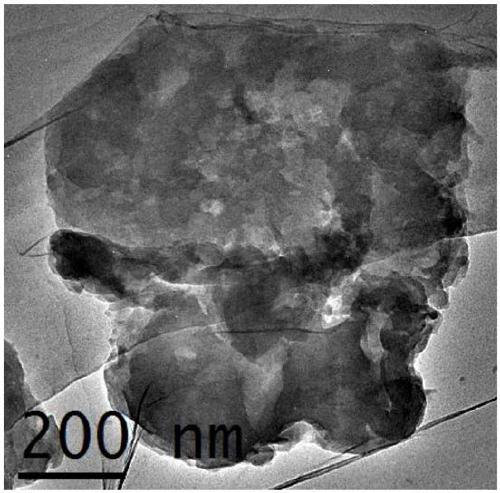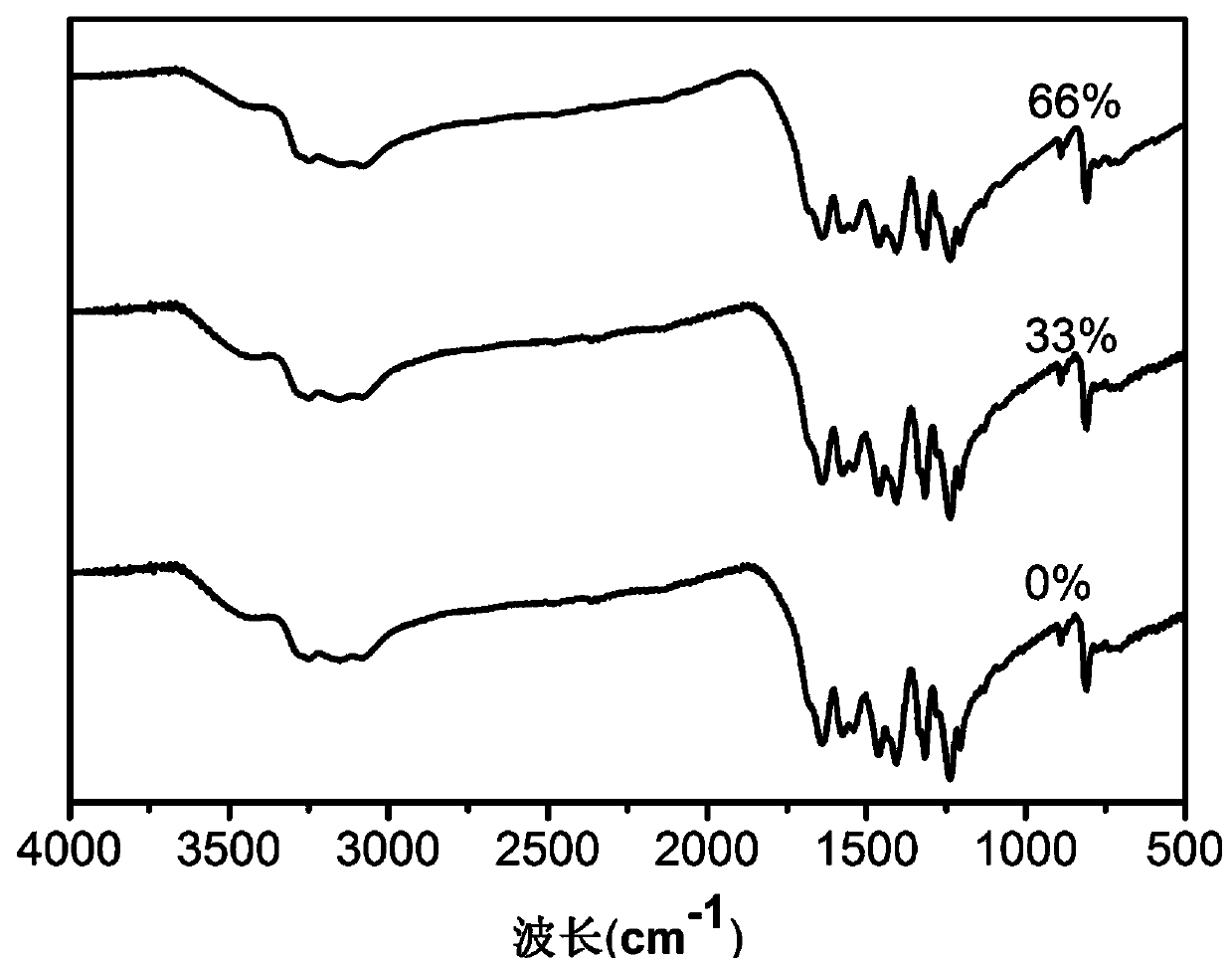Preparation method and application of porous g-C3N4 material
A g-c3n4, porous graphite technology, applied in chemical instruments and methods, hydrogen production, inorganic chemistry and other directions, can solve problems such as unfavorable large-scale industrial production, limit preparation efficiency, etc., achieve short synthesis time, improve preparation efficiency, The effect of high photocatalytic performance
- Summary
- Abstract
- Description
- Claims
- Application Information
AI Technical Summary
Problems solved by technology
Method used
Image
Examples
Embodiment 1
[0024] (1) Weigh 2g of dicyandiamide solid and 1g of urea, and mix them evenly. Grind well to a powder with a mortar and place in a small alumina crucible and seal it with a lid. Put the sealed crucible into a large alumina crucible, evenly cover it with 310g of copper oxide powder, put it in a microwave oven, set the firepower to high fire, heat it in the microwave for 35min, then cool it down to room temperature naturally to obtain a brownish-yellow solid.
[0025] (2) Grind the microwaved solid into powder with a mortar, then put it into a beaker, add 100 ml of deionized water, and process it ultrasonically for 1 hour. The sonicated samples were centrifuged at high speed to remove unreacted precursors and retain g-C 3 N 4 solid. Repeat water washing and centrifugation three times, then put the solid into a watch glass, and heat in a vacuum oven to remove the moisture in the solid. After drying, the samples were ground into powder for future use.
[0026] (3) For the pr...
Embodiment 2
[0028] (1) Weigh 1g of dicyandiamide solid and 2g of urea, and mix them evenly. Grind well to a powder with a mortar and place in a small alumina crucible and seal it with a lid. Put the sealed crucible into a large alumina crucible, cover it evenly with 310g of copper oxide powder, put it in a microwave oven, set the firepower to high fire, heat it in microwave for 35min, then cool it down to room temperature naturally to obtain a brownish-yellow solid.
[0029] (2) Grind the microwaved solid into powder with a mortar, then put it into a beaker, add 100 ml of deionized water, and process it ultrasonically for 1 hour. The sonicated samples were centrifuged at high speed to remove unreacted precursors and retain g-C 3 N 4 solid. Repeat water washing and centrifugation three times, then put the solid into a watch glass, and heat in a vacuum oven to remove the moisture in the solid. After drying, the samples were ground into powder for future use.
[0030] (3) For the prepar...
Embodiment 3
[0035](1) Weigh 1g of dicyandiamide solid and 2g of urea, and mix them evenly. Grind well to a powder with a mortar and place in a small alumina crucible and seal it with a lid. Put the sealed crucible into a large alumina crucible, evenly cover it with 330g of copper oxide powder, put it in a microwave oven, set the firepower to high fire, heat it in microwave for 20min, and cool it down to room temperature naturally to obtain a brownish-yellow solid.
[0036] (2) Grind the microwaved solid into powder with a mortar, then put it into a beaker, add 100 ml of deionized water, and process it ultrasonically for 1 hour. The sonicated samples were centrifuged at high speed to remove unreacted precursors and retain g-C 3 N 4 solid. Repeat water washing and centrifugation three times, then put the solid into a watch glass, and heat in a vacuum oven to remove the moisture in the solid. After drying, the samples were ground into powder for future use.
[0037] (3) For the prepared...
PUM
 Login to View More
Login to View More Abstract
Description
Claims
Application Information
 Login to View More
Login to View More - R&D
- Intellectual Property
- Life Sciences
- Materials
- Tech Scout
- Unparalleled Data Quality
- Higher Quality Content
- 60% Fewer Hallucinations
Browse by: Latest US Patents, China's latest patents, Technical Efficacy Thesaurus, Application Domain, Technology Topic, Popular Technical Reports.
© 2025 PatSnap. All rights reserved.Legal|Privacy policy|Modern Slavery Act Transparency Statement|Sitemap|About US| Contact US: help@patsnap.com



